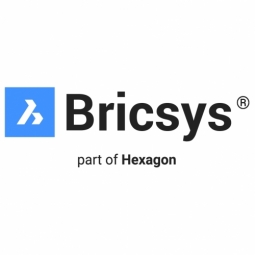技术
- 基础设施即服务 (IaaS) - 私有云
适用行业
- 玻璃
- 零售
适用功能
- 采购
- 质量保证
用例
- 库存管理
- 时间敏感网络
服务
- 测试与认证
关于客户
Engels 是一家家族企业,自 1945 年以来一直从事门窗行业。该公司总部位于比利时洛克伦,设有办公室、木工车间和宽敞的陈列室。除此之外,Engels 还拥有遍布全国的 11 家商店网络。该公司使用现代计算机控制机器自行设计和生产门窗。这使他们能够保持对其产品质量的直接控制。 Engels 通过其商店网络为私人客户提供服务,并通过专门的部门为项目市场和 B2B 部门提供服务。
挑战
Engels 是门窗行业的知名品牌,其现有的 CAD 软件 AutoCAD® LT 面临着挑战。整个集团都使用该软件来设计和生产他们的产品。然而,他们在使用该软件时遇到了一些限制。许可证管理复杂,导致 CAD 用户频繁出现登录问题。这导致 IT 管理员花费大量时间帮助用户解决登录问题。此外,许可证成本逐年增加,但用户体验却没有相应改善。这些问题促使恩格斯寻求一种更具成本效益、用户友好且高效的替代解决方案。
解决方案
Engels 在 BricsCAD 中找到了解决方案,这是 Bricsys 当地经销商 CADKoop 推荐的 CAD 软件。 BricsCAD 因其易于管理和成本效益而被一致选择。与之前的软件不同,BricsCAD 不需要用户每次都登录,这使得它更加用户友好。每个用户都获得了自己的许可证,并且没有任何问题。在成本方面,Engels 选择了 BricsCAD 的永久许可证,从而每年节省大量费用。永久许可证还为他们提供了决定如何使用每个许可证的灵活性。此外,虽然 Engels 主要使用 2D 设计来设计门窗,但 BricsCAD 提供了未来 3D 设计的潜力,并且可以选择稍后将其许可证升级到更高版本。
运营影响
数量效益

Case Study missing?
Start adding your own!
Register with your work email and create a new case study profile for your business.
相关案例.

Case Study
Improving Production Line Efficiency with Ethernet Micro RTU Controller
Moxa was asked to provide a connectivity solution for one of the world's leading cosmetics companies. This multinational corporation, with retail presence in 130 countries, 23 global braches, and over 66,000 employees, sought to improve the efficiency of their production process by migrating from manual monitoring to an automatic productivity monitoring system. The production line was being monitored by ABB Real-TPI, a factory information system that offers data collection and analysis to improve plant efficiency. Due to software limitations, the customer needed an OPC server and a corresponding I/O solution to collect data from additional sensor devices for the Real-TPI system. The goal is to enable the factory information system to more thoroughly collect data from every corner of the production line. This will improve its ability to measure Overall Equipment Effectiveness (OEE) and translate into increased production efficiencies. System Requirements • Instant status updates while still consuming minimal bandwidth to relieve strain on limited factory networks • Interoperable with ABB Real-TPI • Small form factor appropriate for deployment where space is scarce • Remote software management and configuration to simplify operations

Case Study
Digital Retail Security Solutions
Sennco wanted to help its retail customers increase sales and profits by developing an innovative alarm system as opposed to conventional connected alarms that are permanently tethered to display products. These traditional security systems were cumbersome and intrusive to the customer shopping experience. Additionally, they provided no useful data or analytics.

Case Study
How Sirqul’s IoT Platform is Crafting Carrefour’s New In-Store Experiences
Carrefour Taiwan’s goal is to be completely digital by end of 2018. Out-dated manual methods for analysis and assumptions limited Carrefour’s ability to change the customer experience and were void of real-time decision-making capabilities. Rather than relying solely on sales data, assumptions, and disparate systems, Carrefour Taiwan’s CEO led an initiative to find a connected IoT solution that could give the team the ability to make real-time changes and more informed decisions. Prior to implementing, Carrefour struggled to address their conversion rates and did not have the proper insights into the customer decision-making process nor how to make an immediate impact without losing customer confidence.

Case Study
Ensures Cold Milk in Your Supermarket
As of 2014, AK-Centralen has over 1,500 Danish supermarkets equipped, and utilizes 16 operators, and is open 24 hours a day, 365 days a year. AK-Centralen needed the ability to monitor the cooling alarms from around the country, 24 hours a day, 365 days a year. Each and every time the door to a milk cooler or a freezer does not close properly, an alarm goes off on a computer screen in a control building in southwestern Odense. This type of alarm will go off approximately 140,000 times per year, equating to roughly 400 alarms in a 24-hour period. Should an alarm go off, then there is only a limited amount of time to act before dairy products or frozen pizza must be disposed of, and this type of waste can quickly start to cost a supermarket a great deal of money.

Case Study
Supermarket Energy Savings
The client had previously deployed a one-meter-per-store monitoring program. Given the manner in which energy consumption changes with external temperature, hour of the day, day of week and month of year, a single meter solution lacked the ability to detect the difference between a true problem and a changing store environment. Most importantly, a single meter solution could never identify root cause of energy consumption changes. This approach never reduced the number of truck-rolls or man-hours required to find and resolve issues.








